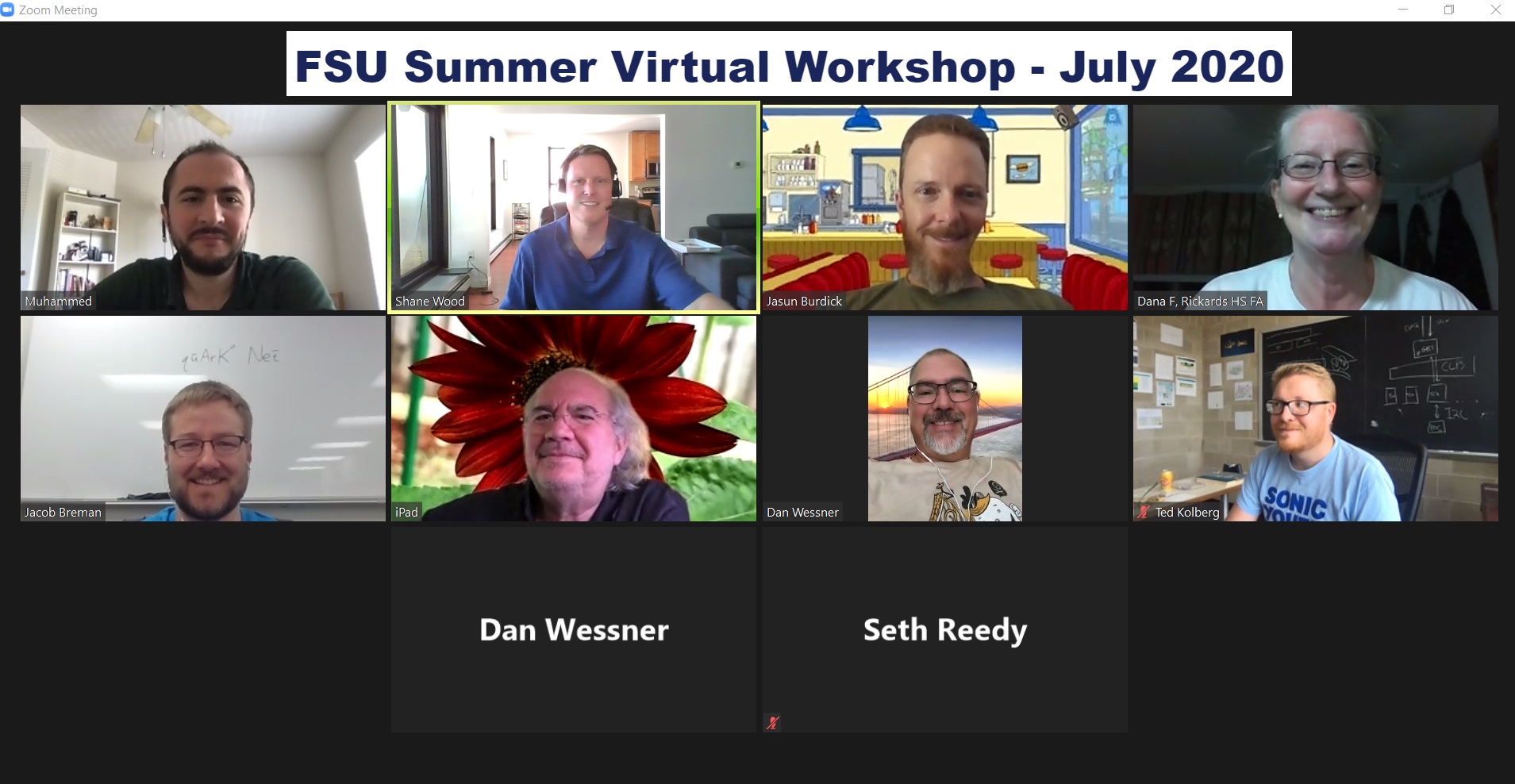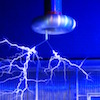Friday Flyer - October 9, 2020

Spotlight on the Florida State University QuarkNet Center
Leads Ted Kolberg, Jasun Burdick and Jacob Breman worked with QuarkNet staff to organize a virtual workshop on July 22–24 that primarily focused on remote student activities. The workshop began with modified QuarkNet classics like Rolling with Rutherford using an online simulation and The Case of the Missing Neutrino using protractors accessible online or with a smartphone, along with shared online spreadsheets. Ted Kolberg gave a talk on electromagnetic waves and shared some wave optics activities he used with students that access online simulations. Teachers also shared activities, strategies, and tools that they found helpful during remote learning. On the final day of the workshop, they held a joint session with the University of Florida QuarkNet Center on machine learning and artificial intelligence, led by Darin Acosta and Alex Roman. At the end of each day, an FSU-UF joint social hour on Zoom allowed QuarkNetters from both centers to get acquainted and collaborate.


News from QuarkNet Central
World Wide Data Day registration is now open! Sign up your class! We have an interesting, new W2D2 measurement with new screencasts coming soon. The W2D2 website for 2020 is ready to go; check it out via quarknet.org > MASTERCLASSES > WORLD WIDE DATA DAY. The registration deadline is November 6 and the big day is November 12. Whether you are teaching in person or online—or some of both—W2D2 measurements and help are accessible.
International Cosmic Day (ICD) will take place on November 4 this year. There are two registration options this year: one for groups (as in the past) and one for individual students.
QuarkNet Educational Discussions (QED) is an opportunity for QuarkNet teachers and staff to get together virtually a couple of times each month to share ideas, ask questions, and connect with QuarkNet colleagues. Our next meeting will take place next Wednesday, October 14, so be sure to mark your calendar!

Physics Experiment Roundup
The CMS collaboration sees evidence of top quark production in heavy ion collisions at the LHC. Read more in Heavy Metal Hits the Top.
If the star Betelgeuse goes supernova, 99% of the energy would be carried away by neutrinos. Learn how the Deep Underground Neutrino Experiment (DUNE), now under construction, may respond to a nearby supernova. Interesting Engineering explores how we can learn about our universe by studying neutrinos.
Symmetry on turning down the volume at 4,850 feet below the surface at the Sanford Underground Research Facility in South Dakota as the LUX-ZEPLIN (LZ) experiment is assembled to search for dark matter.

Resources
The Nobel Prize in Physics 2020 was recently awarded to Roger Penrose, "for the discovery that black hole formation is a robust prediction of the general theory of relatively" and to Reinhard Genzel and Andrea Ghez, "for the discovery of a supermassive compact object at the center of our galaxy." Your can read more from the press release and this APS article.
Rick Dower (Boston center) just so happens to have an activity that he made highlighting some of the physics involved in this year's Nobel Prize in Physics. He has kindly agreed to share with us this SgrA* activity (MS Word or PDF) and has provided this short video as an introduction to the activity. Thanks, Rick!
Don Lincoln's latest video in his Subatomic Story series was posted this week: How the Big Bang really happened.
Henk Hoekstra, cosmologist at Leiden University, has teamed up with artist Thijs Biersteker of Woven Studios in The Netherlands to create Dark Distortions, an art installation at the Science Gallery Dublin that combines art and science in order to immerse viewers in the invisible world of dark matter.

Just for Fun
You may recall when last month illusionist David Blaine ascended to nearly 25,000 feet above the Arizona desert beneath 52 colorful helium balloons, while streaming it all live on YouTube. The Physics Girl got a behind-the-scenes tour of the preparations and discusses some of the science and engineering involved in this video. In another video, she schools David on the science of pressure.
Speaking of the Physics Girl, she is currently building a collection of 20 videos, each a lesson in her introductory physics course. So far, she has six lessons posted. Here's the trailer, introducing the series, and here's her most recent lesson, which is video/lesson #6 about friction. Check out the other lessons on her YouTube channel, where you'll also find new lessons posted in the future. These videos—or at least clips from these videos—may come in handy during the 2020–2021 school year!
We leave you with Laws of Physics, from the xkcd archives.
QuarkNet Staff:
Mark Adams: adams@fnal.gov
Ken Cecire: kcecire@nd.edu
Spencer Pasero: spasero@fnal.gov
Shane Wood: swood5@nd.edu
